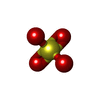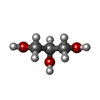[English] 日本語
 Yorodumi
Yorodumi- PDB-9j4s: Structural basis for recognition of SARS-CoV-2 conserved nucleoca... -
+ Open data
Open data
- Basic information
Basic information
| Entry | Database: PDB / ID: 9j4s | |||||||||
|---|---|---|---|---|---|---|---|---|---|---|
| Title | Structural basis for recognition of SARS-CoV-2 conserved nucleocapside epitopes by dominant T cell receptors | |||||||||
 Components Components |
| |||||||||
 Keywords Keywords | VIRAL PROTEIN/IMMUNE SYSTEM / TCR / T cell receptor / SARS-CoV-2 / Nucleocapside / VIRAL PROTEIN-IMMUNE SYSTEM complex | |||||||||
| Function / homology |  Function and homology information Function and homology information: / response to host immune response / viral RNA genome packaging / regulation of interleukin-12 production / negative regulation of interferon-beta production / regulation of dendritic cell differentiation / regulation of T cell anergy / regulation of interleukin-6 production / poly(U) RNA binding / Maturation of nucleoprotein ...: / response to host immune response / viral RNA genome packaging / regulation of interleukin-12 production / negative regulation of interferon-beta production / regulation of dendritic cell differentiation / regulation of T cell anergy / regulation of interleukin-6 production / poly(U) RNA binding / Maturation of nucleoprotein / intracellular membraneless organelle / positive regulation of NLRP3 inflammasome complex assembly / MHC class I protein binding / TAP binding / protection from natural killer cell mediated cytotoxicity / antigen processing and presentation of endogenous peptide antigen via MHC class I via ER pathway, TAP-independent / antigen processing and presentation of endogenous peptide antigen via MHC class Ib / CD28 dependent PI3K/Akt signaling / detection of bacterium / SARS-CoV-2 targets host intracellular signalling and regulatory pathways / protein sequestering activity / secretory granule membrane / negative regulation of receptor binding / early endosome lumen / Nef mediated downregulation of MHC class I complex cell surface expression / DAP12 interactions / transferrin transport / VEGFR2 mediated vascular permeability / cellular response to iron ion / Endosomal/Vacuolar pathway / lumenal side of endoplasmic reticulum membrane / Antigen Presentation: Folding, assembly and peptide loading of class I MHC / peptide antigen assembly with MHC class II protein complex / cellular response to iron(III) ion / MHC class II protein complex / negative regulation of forebrain neuron differentiation / antigen processing and presentation of exogenous protein antigen via MHC class Ib, TAP-dependent / molecular condensate scaffold activity / ER to Golgi transport vesicle membrane / peptide antigen assembly with MHC class I protein complex / regulation of iron ion transport / regulation of erythrocyte differentiation / HFE-transferrin receptor complex / response to molecule of bacterial origin / MHC class I peptide loading complex / defense response / NOD1/2 Signaling Pathway / TAK1-dependent IKK and NF-kappa-B activation / T cell mediated cytotoxicity / positive regulation of T cell cytokine production / DDX58/IFIH1-mediated induction of interferon-alpha/beta / antigen processing and presentation of endogenous peptide antigen via MHC class I / antigen processing and presentation of exogenous peptide antigen via MHC class II / positive regulation of immune response / MHC class I protein complex / positive regulation of T cell activation / peptide antigen binding / positive regulation of receptor-mediated endocytosis / negative regulation of neurogenesis / cellular response to nicotine / positive regulation of T cell mediated cytotoxicity / multicellular organismal-level iron ion homeostasis / RNA stem-loop binding / specific granule lumen / Interleukin-1 signaling / phagocytic vesicle membrane / recycling endosome membrane / Interferon gamma signaling / Immunoregulatory interactions between a Lymphoid and a non-Lymphoid cell / negative regulation of epithelial cell proliferation / MHC class II protein complex binding / Interferon alpha/beta signaling / Modulation by Mtb of host immune system / late endosome membrane / sensory perception of smell / viral capsid / positive regulation of cellular senescence / tertiary granule lumen / DAP12 signaling / T cell differentiation in thymus / PIP3 activates AKT signaling / negative regulation of neuron projection development / protein-folding chaperone binding / ER-Phagosome pathway / protein refolding / viral nucleocapsid / Transcription of SARS-CoV-2 sgRNAs / host cell endoplasmic reticulum-Golgi intermediate compartment / early endosome membrane / protein homotetramerization / Translation of Structural Proteins / Virion Assembly and Release / host extracellular space / host cell Golgi apparatus / amyloid fibril formation / Induction of Cell-Cell Fusion / adaptive immune response / intracellular iron ion homeostasis / Attachment and Entry / learning or memory Similarity search - Function | |||||||||
| Biological species |  Homo sapiens (human) Homo sapiens (human) | |||||||||
| Method |  X-RAY DIFFRACTION / X-RAY DIFFRACTION /  SYNCHROTRON / SYNCHROTRON /  MOLECULAR REPLACEMENT / Resolution: 2.95 Å MOLECULAR REPLACEMENT / Resolution: 2.95 Å | |||||||||
 Authors Authors | Yuan, P. / Wu, D.C. | |||||||||
| Funding support |  China, 2items China, 2items
| |||||||||
 Citation Citation |  Journal: To Be Published Journal: To Be PublishedTitle: Structural basis for recognition of SARS-CoV-2 conserved nucleocapside epitopes by dominant T cell receptors Authors: Yuan, P. / Wu, D.C. | |||||||||
| History |
|
- Structure visualization
Structure visualization
| Structure viewer | Molecule:  Molmil Molmil Jmol/JSmol Jmol/JSmol |
|---|
- Downloads & links
Downloads & links
- Download
Download
| PDBx/mmCIF format |  9j4s.cif.gz 9j4s.cif.gz | 340 KB | Display |  PDBx/mmCIF format PDBx/mmCIF format |
|---|---|---|---|---|
| PDB format |  pdb9j4s.ent.gz pdb9j4s.ent.gz | 275.3 KB | Display |  PDB format PDB format |
| PDBx/mmJSON format |  9j4s.json.gz 9j4s.json.gz | Tree view |  PDBx/mmJSON format PDBx/mmJSON format | |
| Others |  Other downloads Other downloads |
-Validation report
| Summary document |  9j4s_validation.pdf.gz 9j4s_validation.pdf.gz | 531.5 KB | Display |  wwPDB validaton report wwPDB validaton report |
|---|---|---|---|---|
| Full document |  9j4s_full_validation.pdf.gz 9j4s_full_validation.pdf.gz | 563.7 KB | Display | |
| Data in XML |  9j4s_validation.xml.gz 9j4s_validation.xml.gz | 65.7 KB | Display | |
| Data in CIF |  9j4s_validation.cif.gz 9j4s_validation.cif.gz | 85.8 KB | Display | |
| Arichive directory |  https://data.pdbj.org/pub/pdb/validation_reports/j4/9j4s https://data.pdbj.org/pub/pdb/validation_reports/j4/9j4s ftp://data.pdbj.org/pub/pdb/validation_reports/j4/9j4s ftp://data.pdbj.org/pub/pdb/validation_reports/j4/9j4s | HTTPS FTP |
-Related structure data
| Related structure data |  9j4tC  9j4uC  9j4vC C: citing same article ( |
|---|---|
| Similar structure data | Similarity search - Function & homology  F&H Search F&H Search |
- Links
Links
- Assembly
Assembly
| Deposited unit | 
| ||||||||
|---|---|---|---|---|---|---|---|---|---|
| 1 | 
| ||||||||
| 2 | 
| ||||||||
| 3 |
| ||||||||
| Unit cell |
|
- Components
Components
-T cell receptor CLA1 ... , 2 types, 4 molecules GAIB
| #1: Protein | Mass: 27585.551 Da / Num. of mol.: 2 Source method: isolated from a genetically manipulated source Details: T cell receptor beta / Source: (gene. exp.)  Homo sapiens (human) / Production host: Homo sapiens (human) / Production host:  #2: Protein | Mass: 23221.771 Da / Num. of mol.: 2 Source method: isolated from a genetically manipulated source Source: (gene. exp.)  Homo sapiens (human) / Production host: Homo sapiens (human) / Production host:  |
|---|
-Protein , 2 types, 4 molecules CFDH
| #3: Protein | Mass: 32093.211 Da / Num. of mol.: 2 Source method: isolated from a genetically manipulated source Source: (gene. exp.)  Homo sapiens (human) / Gene: HLA-B, HLAB / Production host: Homo sapiens (human) / Gene: HLA-B, HLAB / Production host:  #4: Protein | Mass: 11879.356 Da / Num. of mol.: 2 Source method: isolated from a genetically manipulated source Source: (gene. exp.)  Homo sapiens (human) / Gene: B2M, CDABP0092, HDCMA22P / Production host: Homo sapiens (human) / Gene: B2M, CDABP0092, HDCMA22P / Production host:  |
|---|
-Protein/peptide , 1 types, 2 molecules EJ
| #5: Protein/peptide | Mass: 1295.464 Da / Num. of mol.: 2 / Source method: obtained synthetically Source: (synth.)  References: UniProt: P0DTC9 |
|---|
-Non-polymers , 3 types, 14 molecules 




| #6: Chemical | ChemComp-SO4 / #7: Chemical | ChemComp-GOL / | #8: Water | ChemComp-HOH / | |
|---|
-Details
| Has ligand of interest | N |
|---|---|
| Has protein modification | Y |
-Experimental details
-Experiment
| Experiment | Method:  X-RAY DIFFRACTION / Number of used crystals: 1 X-RAY DIFFRACTION / Number of used crystals: 1 |
|---|
- Sample preparation
Sample preparation
| Crystal | Density Matthews: 2.92 Å3/Da / Density % sol: 57.94 % |
|---|---|
| Crystal grow | Temperature: 291 K / Method: vapor diffusion, hanging drop / pH: 7 Details: 0.1M Tris-base/hydrochloric acid (pH 7.0), 0.2 M lithium sulfate, and 1.9 M ammonium sulfate |
-Data collection
| Diffraction | Mean temperature: 100 K / Serial crystal experiment: N |
|---|---|
| Diffraction source | Source:  SYNCHROTRON / Site: SYNCHROTRON / Site:  SSRF SSRF  / Beamline: BL02U1 / Wavelength: 0.9792 Å / Beamline: BL02U1 / Wavelength: 0.9792 Å |
| Detector | Type: DECTRIS EIGER2 S 9M / Detector: PIXEL / Date: Jun 9, 2024 |
| Radiation | Protocol: SINGLE WAVELENGTH / Monochromatic (M) / Laue (L): M / Scattering type: x-ray |
| Radiation wavelength | Wavelength: 0.9792 Å / Relative weight: 1 |
| Reflection | Resolution: 2.95→76.1 Å / Num. obs: 48369 / % possible obs: 99.9 % / Redundancy: 7.5 % / CC1/2: 0.995 / Net I/σ(I): 10.9 |
| Reflection shell | Resolution: 2.95→3.06 Å / Num. unique obs: 4775 / CC1/2: 0.687 |
- Processing
Processing
| Software |
| ||||||||||||||||||||||||||||||||||||||||||||||||||||||||||||||||||||||||||||||||||||||||||||||||||||||||||||||||||||||||||||||||||||||||||||||||||||||||||||||||||||||||||||||||||||||
|---|---|---|---|---|---|---|---|---|---|---|---|---|---|---|---|---|---|---|---|---|---|---|---|---|---|---|---|---|---|---|---|---|---|---|---|---|---|---|---|---|---|---|---|---|---|---|---|---|---|---|---|---|---|---|---|---|---|---|---|---|---|---|---|---|---|---|---|---|---|---|---|---|---|---|---|---|---|---|---|---|---|---|---|---|---|---|---|---|---|---|---|---|---|---|---|---|---|---|---|---|---|---|---|---|---|---|---|---|---|---|---|---|---|---|---|---|---|---|---|---|---|---|---|---|---|---|---|---|---|---|---|---|---|---|---|---|---|---|---|---|---|---|---|---|---|---|---|---|---|---|---|---|---|---|---|---|---|---|---|---|---|---|---|---|---|---|---|---|---|---|---|---|---|---|---|---|---|---|---|---|---|---|---|
| Refinement | Method to determine structure:  MOLECULAR REPLACEMENT / Resolution: 2.95→76.1 Å / Cor.coef. Fo:Fc: 0.929 / Cor.coef. Fo:Fc free: 0.904 / SU B: 16.021 / SU ML: 0.288 / Cross valid method: THROUGHOUT / ESU R Free: 0.384 / Stereochemistry target values: MAXIMUM LIKELIHOOD MOLECULAR REPLACEMENT / Resolution: 2.95→76.1 Å / Cor.coef. Fo:Fc: 0.929 / Cor.coef. Fo:Fc free: 0.904 / SU B: 16.021 / SU ML: 0.288 / Cross valid method: THROUGHOUT / ESU R Free: 0.384 / Stereochemistry target values: MAXIMUM LIKELIHOOD
| ||||||||||||||||||||||||||||||||||||||||||||||||||||||||||||||||||||||||||||||||||||||||||||||||||||||||||||||||||||||||||||||||||||||||||||||||||||||||||||||||||||||||||||||||||||||
| Solvent computation | Ion probe radii: 0.8 Å / Shrinkage radii: 0.8 Å / VDW probe radii: 1.2 Å / Solvent model: MASK | ||||||||||||||||||||||||||||||||||||||||||||||||||||||||||||||||||||||||||||||||||||||||||||||||||||||||||||||||||||||||||||||||||||||||||||||||||||||||||||||||||||||||||||||||||||||
| Displacement parameters | Biso mean: 44.418 Å2
| ||||||||||||||||||||||||||||||||||||||||||||||||||||||||||||||||||||||||||||||||||||||||||||||||||||||||||||||||||||||||||||||||||||||||||||||||||||||||||||||||||||||||||||||||||||||
| Refinement step | Cycle: 1 / Resolution: 2.95→76.1 Å
| ||||||||||||||||||||||||||||||||||||||||||||||||||||||||||||||||||||||||||||||||||||||||||||||||||||||||||||||||||||||||||||||||||||||||||||||||||||||||||||||||||||||||||||||||||||||
| Refine LS restraints |
|
 Movie
Movie Controller
Controller


 PDBj
PDBj






